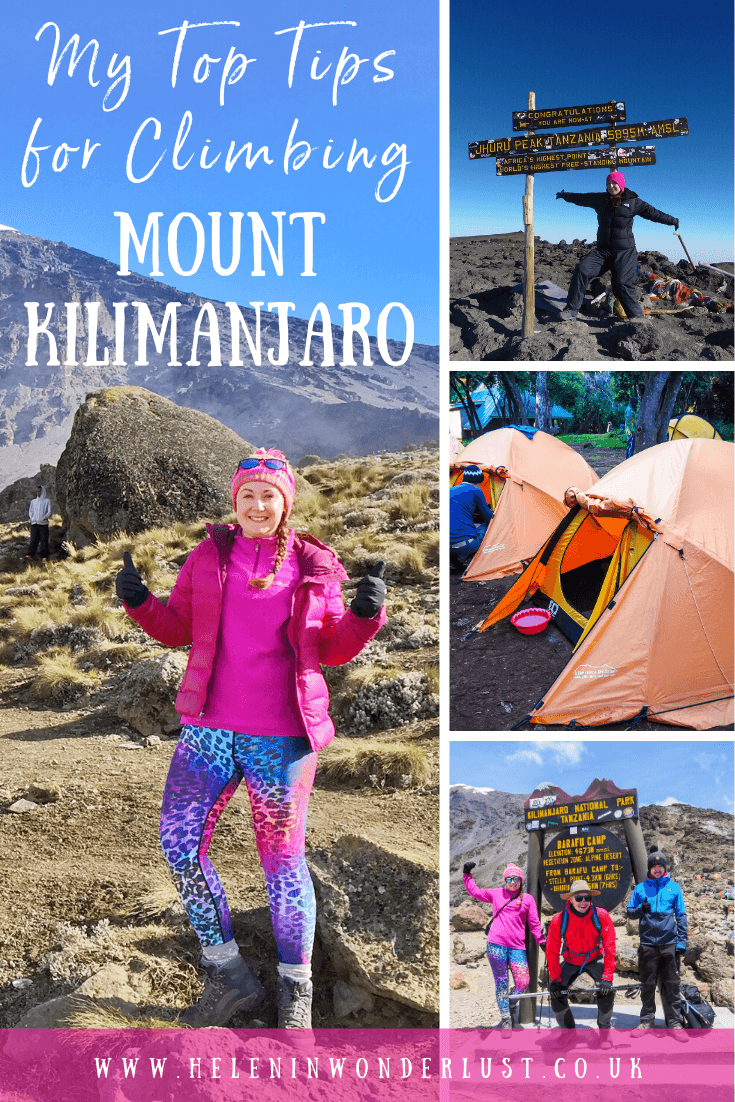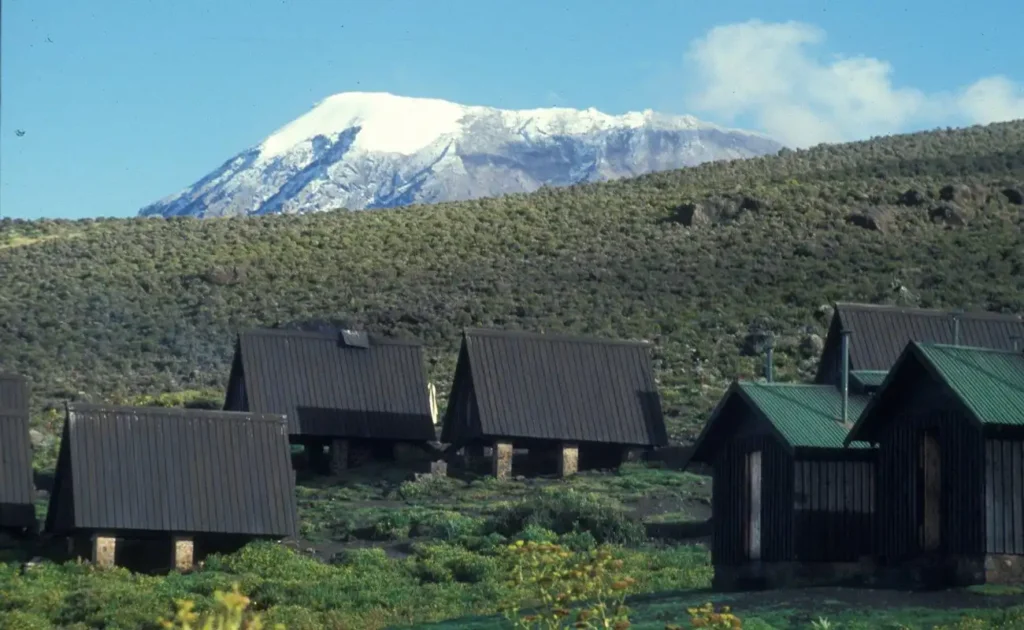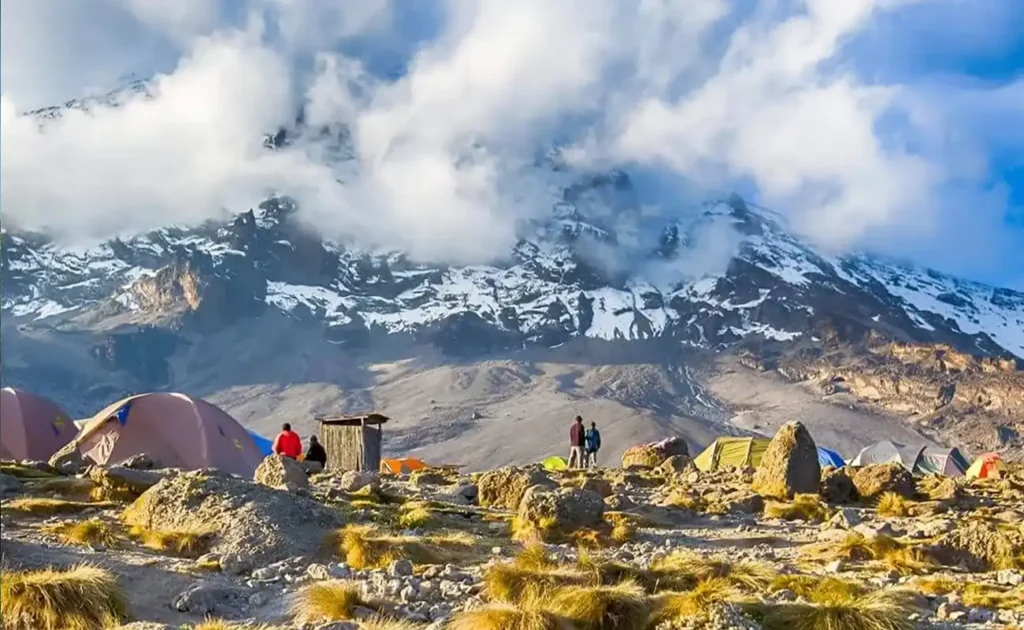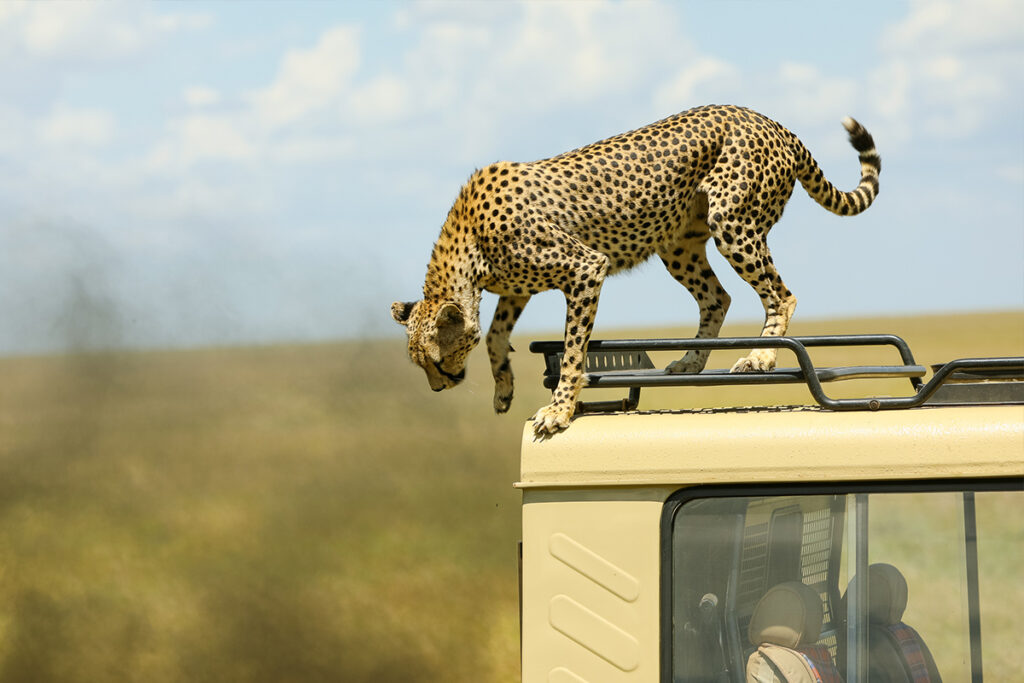Every year, over 35,000 ambitious climbers set out to conquer the majestic Kilimanjaro, a peak that rises nearly 20,000 feet above sea level. This incredible feat may seem daunting, but the right training can transform a challenging ascent into an achievable goal. A well-crafted regimen is your passport to the summit, just as preparation is the key to unlocking new heights.
Understanding the versatility of Kilimanjaro’s climate zones—ranging from tropical rainforest to alpine desert—is crucial. Training should emphasize building cardiovascular strength and improving acclimatization through hikes at various altitudes. Studies reveal that preparing in altitude-simulating environments can increase summit success by up to 20%. This strategic blend of physical and environmental preparation underscores the importance of a comprehensive training plan.
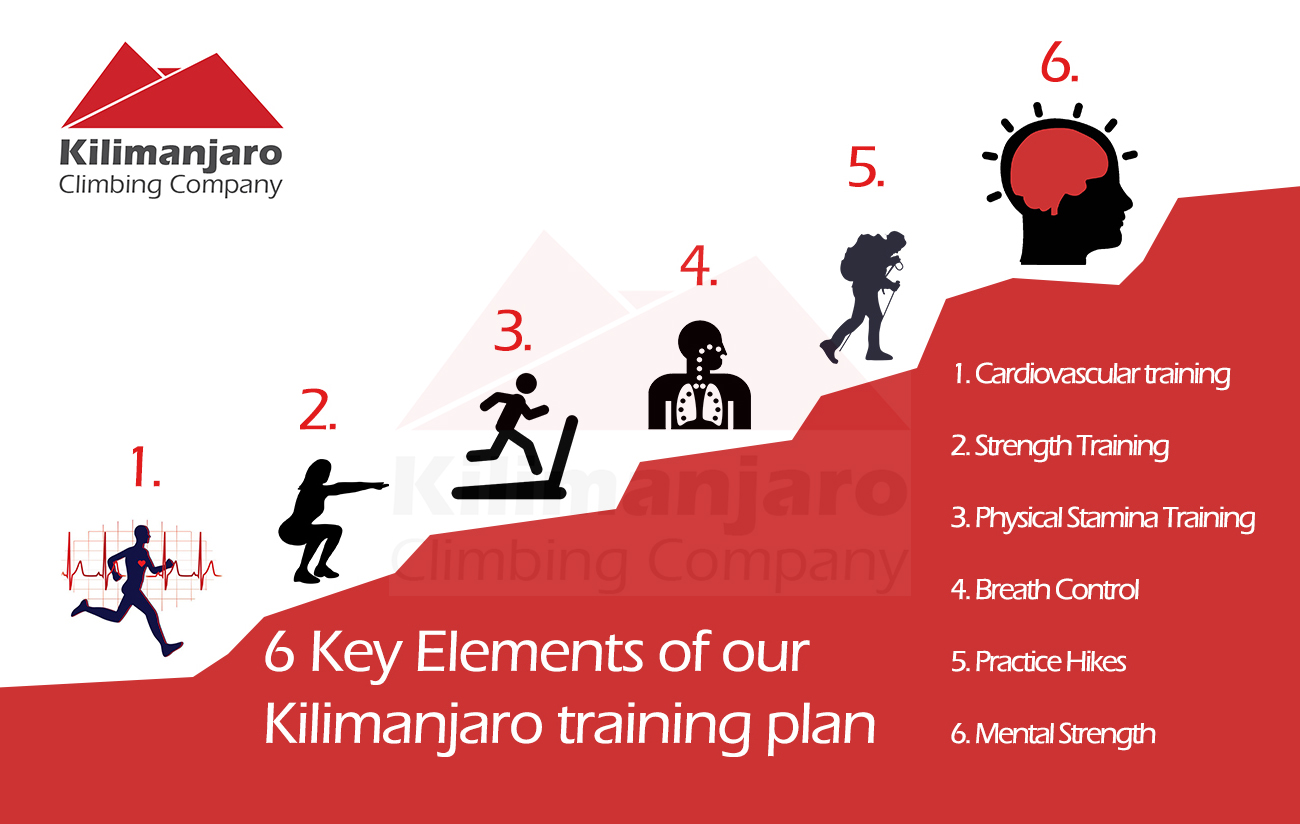
Essential Training Elements for Climbing Kilimanjaro
Physical conditioning is key when preparing for Kilimanjaro. Start with daily hikes, gradually increasing the duration and difficulty. Adding in strength training can help build the muscle needed for the steep climbs. Consistent exercise routines over several months are ideal. This type of preparation helps to ensure your body can handle the strenuous trek.
Acclimatizing to high altitudes is another critical component. Try training in environments that simulate higher elevations. This could be done by hiking in nearby mountains or using altitude masks. The goal is to get your body used to reduced oxygen levels. This preparation helps to prevent altitude sickness during the climb.
Nutritional strategies play a significant role in your training. A balanced diet rich in proteins, carbohydrates, and fats will support muscle growth and provide energy. Hydration is equally important; drink plenty of water throughout your training. Packing nutrient-dense snacks for your trek can also make a big difference. Examples include nuts, dried fruits, and energy bars.
Mental preparation shouldn’t be overlooked. Meditation and visualization techniques can help build mental strength. Facing the unpredictable mountain conditions will test your resilience. Practicing stress management techniques ahead of time is beneficial. Remember, a positive mindset can be just as important as physical fitness when climbing Kilimanjaro.
How to Train for Climbing Kilimanjaro (The Best Way)
Physical Conditioning and Stamina Building
Building stamina is crucial for tackling Kilimanjaro. Start by incorporating regular aerobic exercises into your routine. Running, cycling, and swimming are excellent choices. Aim for at least 30 minutes of cardio five days a week. Consistency is key to building endurance.
Strength training is just as important as cardio. Focus on exercises that target the legs, back, and core. Squats, lunges, and deadlifts will develop the muscles needed for steep ascents. Include these exercises at least three times a week. Strong muscles help prevent injuries during the climb.
Don’t forget to add some flexibility and balance training. Yoga and Pilates can improve your overall fitness and reduce the risk of muscle strain. These practices also promote better posture and breathing techniques. Devote time to stretching before and after workouts. This will aid in recovery and enhance flexibility.
It’s essential to gradually increase the intensity of your workouts. Progressive overload ensures that your body continues to adapt and improve. Track your progress and make adjustments as necessary. Look for signs like reduced fatigue and better overall performance. This gradual approach helps build the optimal physical condition for your ascent.
Acclimatization Techniques for High Altitudes
Acclimatization is vital for a successful climb up Kilimanjaro. Climbing too quickly can lead to altitude sickness, which can be dangerous. One common technique is to “climb high, sleep low.” This means climbing to a higher altitude during the day, then sleeping at a lower elevation. This helps your body adjust to the reduced oxygen levels.
Staying hydrated is another important acclimatization strategy. Drink plenty of water throughout your ascent to keep your body functioning well. Proper hydration aids in oxygen circulation, reducing the risk of altitude sickness. Avoid caffeine and alcohol, which can dehydrate you. Instead, opt for herbal teas and electrolyte drinks.
Listening to your body is crucial during high-altitude climbs. Symptoms like headaches, dizziness, or fatigue are signs you’re going too fast. If you experience these, it’s vital to rest and allow your body more time to adjust. Take frequent breaks and move at a steady pace. Your body will thank you later.
Gradually increasing exposure to higher altitudes before your climb can be beneficial. Practice hikes in nearby mountains or use training masks that simulate altitude conditions. Brief stays in high-altitude locations before your trip can further aid acclimatization. This preparation improves your body’s adaptation process. You’ll feel more confident and ready for the challenge.
Nutritional Strategies for Mountaineers
Proper nutrition is crucial for mountaineers aiming to conquer Kilimanjaro. Starting with a high-calorie diet is essential, as your body will burn a lot of energy. Focus on meals that combine carbohydrates, proteins, and healthy fats. Carbohydrates provide quick energy, while proteins repair muscle tissues. Healthy fats sustain prolonged activities.
Hydration plays a significant role in your success as well. Drink at least 3-4 liters of water daily to stay hydrated. Dehydration can lead to fatigue and altitude sickness. Carry water purification tablets or a filter since clean water may not always be available. Avoiding caffeinated drinks can also aid hydration.
Snacks are another key part of your nutritional strategy. Choose nutrient-dense options that are easy to carry. Good examples include:
- Nuts and seeds
- Dried fruits
- Energy bars
- Trail mix
These snacks help maintain energy levels and prevent hunger between meals.
Planning meals for higher altitudes needs special attention. Your appetite might decrease, but maintaining calorie intake is vital. Focus on lightweight, high-energy foods. Freeze-dried meals and instant oatmeal are practical options. They’re easy to prepare and pack.
Supplements can also support your journey. Consider bringing multi-vitamins or electrolyte tablets. These ensure you aren’t missing essential nutrients. Adaptogenic herbs like Rhodiola can help manage physical stress. Always consult a healthcare provider before starting any supplement regime.
Lastly, test your nutrition plan before the trip. Try different foods and snacks during your training hikes. This lets you find what works best for your body. Making adjustments ahead of time ensures you’re ready for the demands of Kilimanjaro.
Mental Preparation and Resilience Training
Mental toughness is as important as physical strength when climbing Kilimanjaro. Visualization exercises can help prepare you for the journey. Imagine yourself reaching the summit with each training session. This positive mindset aids motivation and helps overcome obstacles. Confidence grows when you visualize success.
Developing resilience is another key aspect. Resilience allows you to adapt to challenging conditions on the mountain. Practicing mindfulness and meditation can increase your mental strength. These techniques help manage stress and maintain focus. Consistent practice will improve your ability to stay calm under pressure.
Setting manageable goals throughout your training is crucial. Break down your climb into smaller sections. Celebrate each milestone to build confidence. A step-by-step approach helps you stay on track. Achieving small goals leads to bigger successes.
Understanding potential challenges is also essential. Harsh weather, altitude sickness, and exhaustion can test your limits. Prepare by researching others’ experiences and learning from them. This knowledge will make you more adaptable. Planning for adversity helps you anticipate and manage difficulties.
Support systems are vital in resilience training. Surround yourself with encouraging friends or join a hiking group. Sharing experiences and advice improves morale. Having a support network can boost your confidence. Teamwork increases your chances of ascending successfully.
Recommended Gear and Supplies for the Trek
Choosing the right gear is crucial for a successful Kilimanjaro trek. Start with quality footwear, as comfortable hiking boots can make a big difference. Ensure they’re waterproof to handle varied terrain. Break them in before the journey to avoid blisters. Proper socks with moisture-wicking fabric are essential too.
Layered clothing is necessary due to Kilimanjaro’s changing climate. Begin with a moisture-wicking base layer, followed by an insulating middle layer. The outer layer should be a waterproof and windproof jacket. Pack thermal underwear and warm hats for cold nights. Gloves and scarves offer extra warmth and protection against the elements.
Consider the equipment you’ll need. A sturdy backpack is important for carrying essentials. It should have good support and adjustable straps. Additionally, bring a sleeping bag rated for low temperatures. Trekking poles can provide stability and reduce strain on your legs.
Don’t overlook smaller items that may be lifesavers. A headlamp will be useful for early starts or late arrivals. Compact first-aid kits are essential for treating minor injuries. Sunscreen and sunglasses protect you from strong UV rays. Keep a reusable water bottle for hydration along the way.
Plan for nutrition and comfort. High-energy snacks like trail mix and protein bars fuel the body. Carry compact, lightweight cooking gear if meals aren’t provided by guides. Insect repellent wards off pests in lower altitudes. A lightweight inflatable pillow enhances sleeping comfort.
Finally, personal documents and permits are vital for your hike. Safeguard your passport and keep copies of all necessary paperwork. Having insurance details and emergency contacts handy is wise. Documentation is as important as your physical preparation. Staying organized will ensure a smoother journey.
Navigating Kilimanjaro’s Routes: Insights and Tips
There are several routes to the summit of Kilimanjaro, each with its unique challenges. The Machame Route is popular for its scenic beauty, but it requires a good level of fitness due to its steep paths. It’s also known as the “Whiskey Route” because it’s tougher than the “Coca-Cola Route” (Marangu). Marangu is more straightforward and has hut accommodations instead of campsites. However, it’s crowded during peak seasons.
For a quieter experience, consider the Lemosho Route. It offers beautiful views and allows for better acclimatization due to its longer duration. The Rongai Route approaches from the north and is less traveled, making it ideal for those seeking solitude. Shira and Umbwe Routes are also options but are more challenging. Umbwe is one of the steepest routes, recommended only for experienced climbers.
Altitude sickness is a major concern on all routes. Gradual ascent helps your body adjust to higher altitudes. Choosing a longer route can improve acclimatization odds:
- Lemosho (7-8 days)
- Machame (6-7 days)
- Rongai (6-7 days)
Longer treks give your body more time to adapt to reduced oxygen levels.
Always trek with an experienced guide to enhance your safety and enjoyment of the climb. Guides provide valuable insights into route conditions and local culture. They help manage altitude sickness symptoms should they arise. Guides also assist with navigation and finding the best camping spots.
Hiring porters can lighten your load:
- Porters carry equipment so you can focus on hiking.
- This reduces fatigue and stress significantly.
- A lighter load means you enjoy the journey more.
Your gear choices matter too. Trekking poles offer stability on challenging sections of each route.
Lightweight tents withstand strong winds that sweep across the mountain:
| Item | Purpose |
|---|---|
| Trekking Poles | Add stability and reduce strain |
| Sturdy Boots | Protect feet from rough terrain |
| Shelter | Tent with good wind resistance |
Staying Safe: Health and Emergency Protocols
Health safety is a top priority when climbing Kilimanjaro. Preparing your body for altitude is crucial to avoid sickness. Training at varying heights helps your lungs become stronger. Remember to eat well and stay hydrated both before and during the climb. A balanced diet enhances your body’s resilience against stress.
Pack a first-aid kit with essential items like band-aids and antiseptic wipes. Include medications for common issues such as headaches or upset stomachs. Bringing a small mirror can help signal for help if you’re in distress. Knowing basic first aid skills can be life-saving. Keep emergency contact numbers in your kit too.
Understanding Kilimanjaro’s weather patterns helps you stay prepared. The mountain’s climate changes swiftly, from tropical at the base to icy at the summit. Layered clothing keeps you comfy as you experience varying temperatures. Protecting yourself from the sun with sunscreen and sunglasses is vital. Carrying extra rain gear is also wise.
Acclimatization involves monitoring oxygen levels in your blood to anticipate altitude sickness. Consider renting or bringing a portable pulse oximeter. This device measures oxygen saturation and heart rate to keep track of your health. Rest whenever you notice symptoms of altitude sickness. Allowing your body to adjust is key.
Emergency protocols include having a clear plan in case of severe illness. Guides are essential as they know the fastest evacuation routes. Helicopter rescue might be an option, but it’s often costly. Ensure your travel insurance covers such emergencies. Communicate your plans with family or friends before heading off.
Maintaining positive mental health is also part of staying safe. Tiredness and stress can lead to careless mistakes. Practice mindfulness techniques to help keep calm in tough situations. Encouraging teammates reinforces trusting relationships. Shared experiences build camaraderie and make the climb a memorable adventure.
Key Takeaways
- Build stamina with regular aerobic and strength training exercises.
- Train at high altitudes to acclimatize your body.
- Maintain a balanced diet and stay hydrated.
- Pack essential gear for various weather conditions.
- Mental preparation with visualization and mindfulness is crucial.
